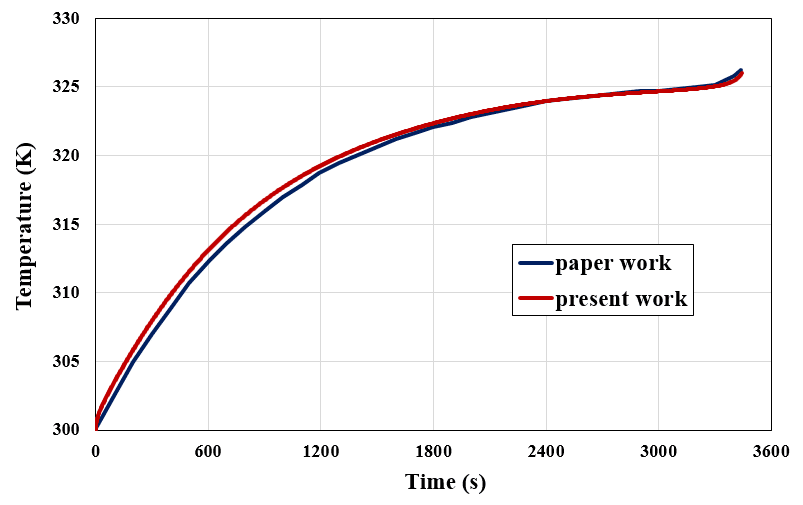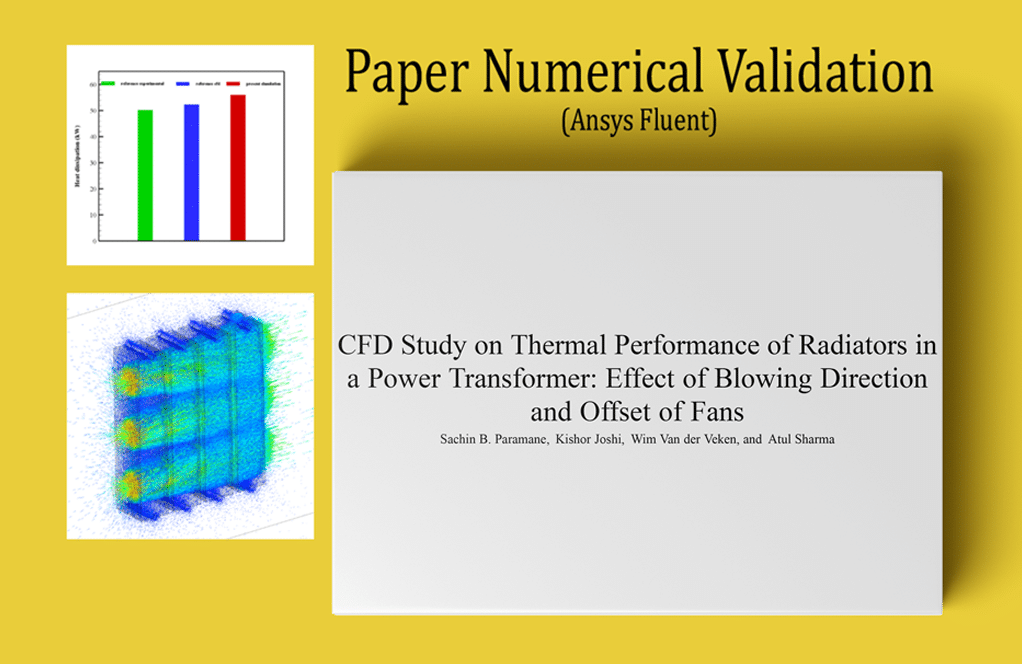Lithium-Ion Battery Thermal Management with PCM, Paper Numerical Validation, ANSYS Fluent
$320.00 $160.00 Student Discount
- This product numerically simulates the Lithium-Ion Battery with PCM using ANSYS Fluent software.
- We design the 3-D model with the Design Modeler software.
- We mesh the model with ANSYS Meshing software.
- We use the Battery Model to define a battery discharge.
- We use the Multi-Scale Multi-Domain (MSMD) solution method and NTGK electrochemistry model.
- We used the Solidification and Melting Model to define phase change material (PCM).
- The present CFD work is Validated with a reference Article.
To Order Your Project or benefit from a CFD consultation, contact our experts via email (info@mr-cfd.com), online support tab, or WhatsApp at +44 7443 197273.
There are some Free Products to check our service quality.
If you want the training video in another language instead of English, ask it via info@mr-cfd.com after you buy the product.
Description
Description
In this project, we perform the CFD simulation of a “Lithium-Ion Battery with PCM” in ANSYS Fluent software.
We present this CFD product based on the simulation of a reference article “Thermal management of counter terminal lithium-ion battery using Bio-based PCM.” Then, we compare the present work results with the reference article to obtain a paper validation.
A battery is a device that converts chemical energy into electric energy through electrochemical reactions. As a result, significant heat is generated during the normal battery operation (charging or discharging).
Therefore, we study the thermal behavior of a battery cell and then, evaluate the temperature reduction by applying the Phase Change Material (PCM).
So, we analyze the battery performance in Two Cases, based on the reference paper:
First, we only analyze a lithium-ion battery with counter terminals. This battery includes the Active and Passive components. The active cell is where electrochemical reactions occur, and the passive zones consisting of the Positive and Negative Tabs (Terminals) are used for electric conductivity.
Second, we analyze a battery containing the PCM cover. we apply the PCM layer to the battery cell on both sides. PCMs can release or absorb sufficient energy at phase exchange to provide useful heat or cooling.
In the present study, we consider PCM in the solid phase at the initial state. So, it can absorb heat generation in the battery cell; so that battery temperature becomes lower.
Methodology
We model the battery geometry in Design Modeler software. In case 1, we model a vertical battery consisting of an active cell with positive and negative tabs. In case 2, we model a PCM layer to both sides of the batter cell.
We mesh the model in Ansys Meshing software. In case 1, 519,466 elements are generated and in case 2, 650,809 elements are generated.
Finally, we simulate the present battery system using the Battery Model in Ansys Fluent software.
So, we use the Multi-Scale Multi-Domain (MSMD) solution method. The MSMD is a comprehensive method for modeling lithium-ion batteries; because it involves a multi-scale and multi-physic nature.
Then, we use the NTGK (Newman, Tiedemann, Gu, and Kim) electrochemistry sub-model. The NTGK model is a semi-empirical method for electrochemical computations.
We intend to analyze the battery discharge process at a 1 C rate. The C-rate is the charging/discharging current to the battery’s nominal capacity. We set up other battery modeling information according to the reference article; Including materials, boundary conditions, battery parameters, etc.
Since the charging/discharging process in the battery system occurs over time, we run the calculation in an unsteady state (transient).
As mentioned, we must apply the phase change materials (PCMs).
So, we use the Solidification and Melting Model to define phase transitions between solid and liquid phases over time.
Conclusion
In the post-processing, we analyze the present battery system, for approximately 1 hour.
So, we obtain contours of temperature distribution at different times.
In case 1, we investigate a battery without PCM. According to the results, battery temperature gradually increases over time during a discharge process. Temperature rise is due to heat generation during battery operation.
In case 2, we investigate a battery with PCM. According to the results, battery temperature increases at a slow rate. In other words, the PCM absorbs the heat generated in the battery cell, which leads to control temperature rise.
So, we obtain contours of liquid fraction distribution at different times. According to the results, PCMs change from solid to liquid phase by absorbing heat from the battery cell.
Finally, we compare the present results with the paper to conclude paper validation.
Therefore, we present the maximum temperature and voltage plots over time, for case 1. As expected, temperature increases and voltage drops.
Then, we present the maximum temperature plot over time, for case 2. As expected, temperature increases but at a slow rate. It is because of applying PCMs.
As you see, the results of the present work are completely consistent with the results in the reference article. The plots show a very low error percentage. So, we can conclude that we succeeded in validating the reference paper.













Reviews
There are no reviews yet.